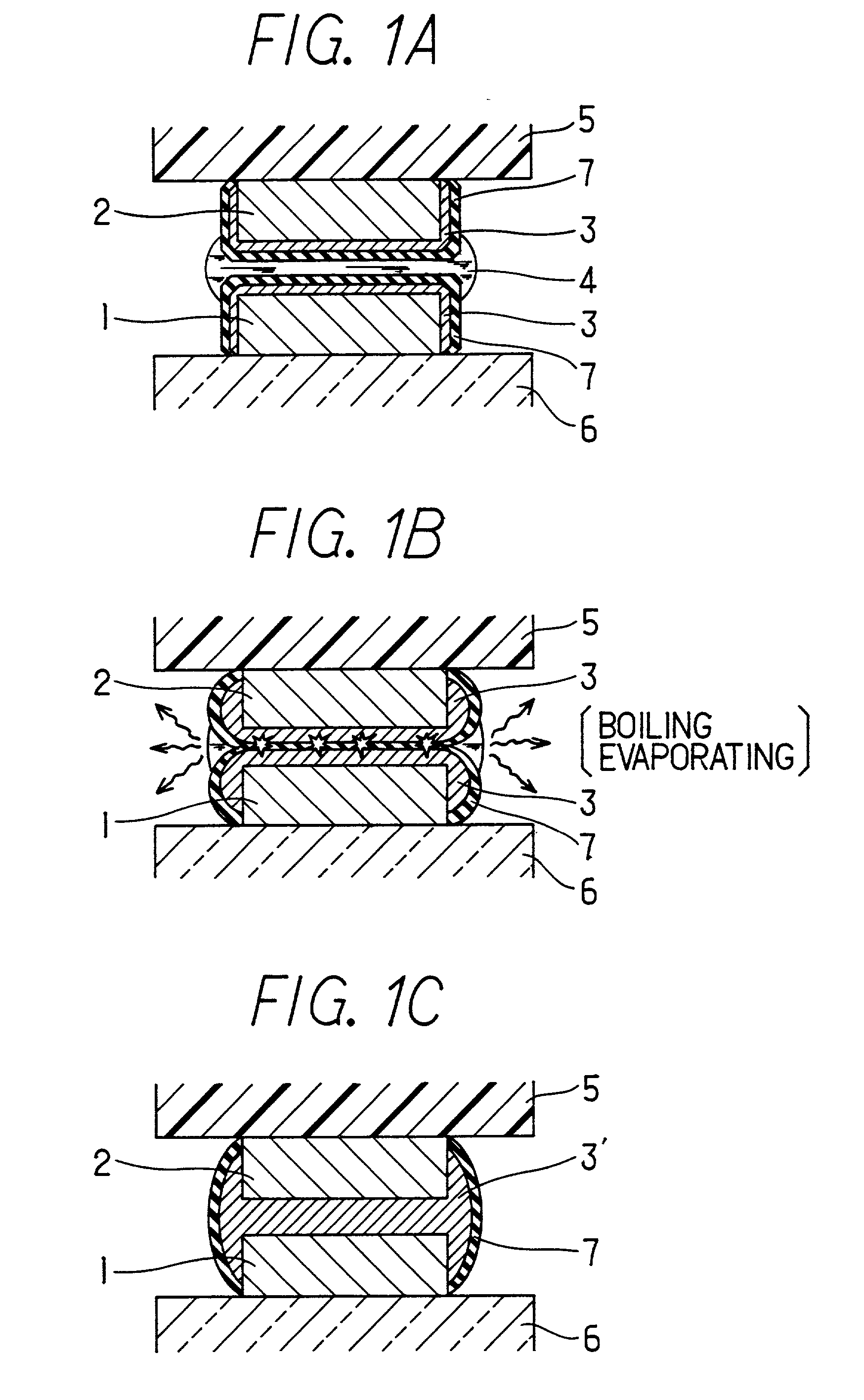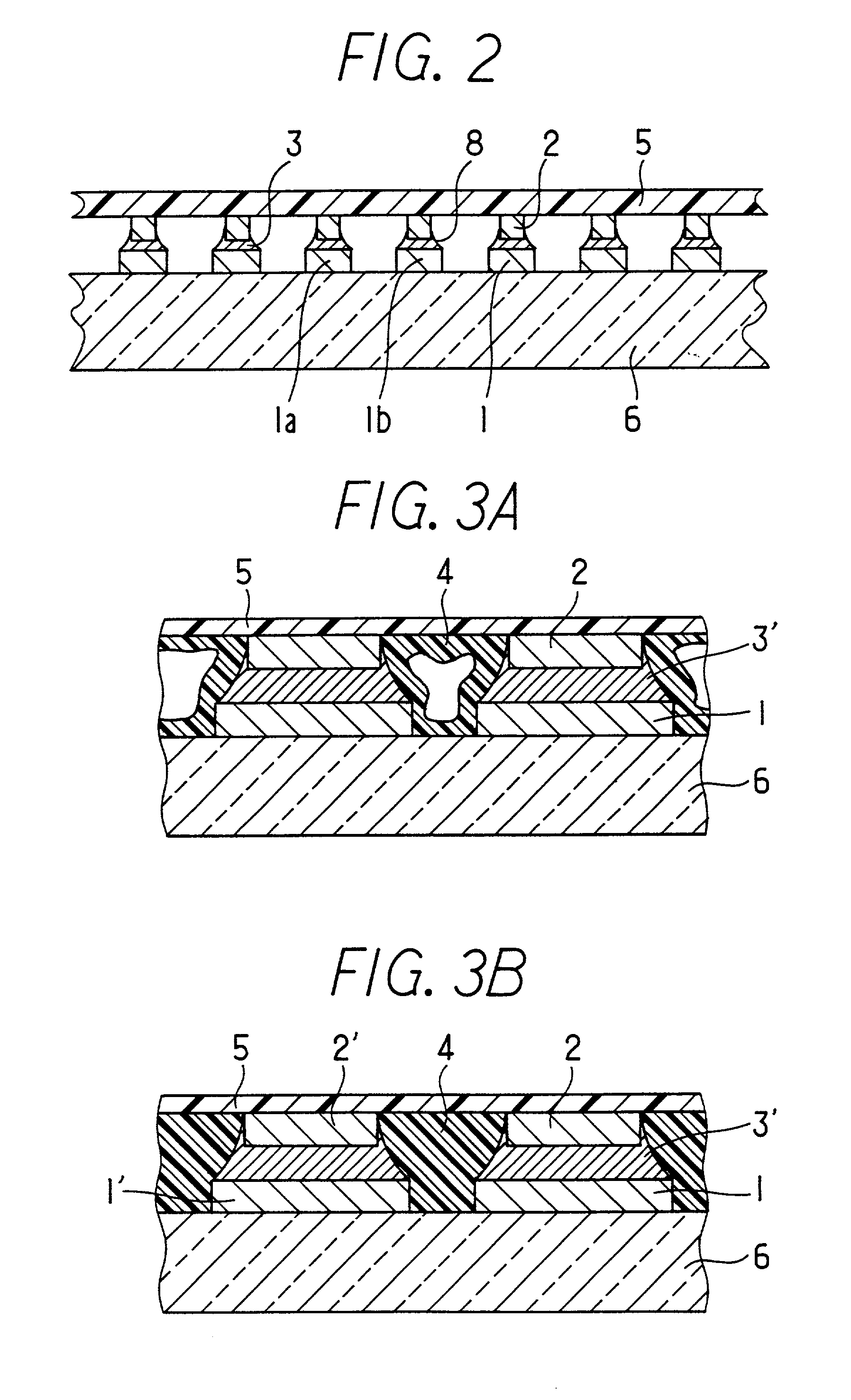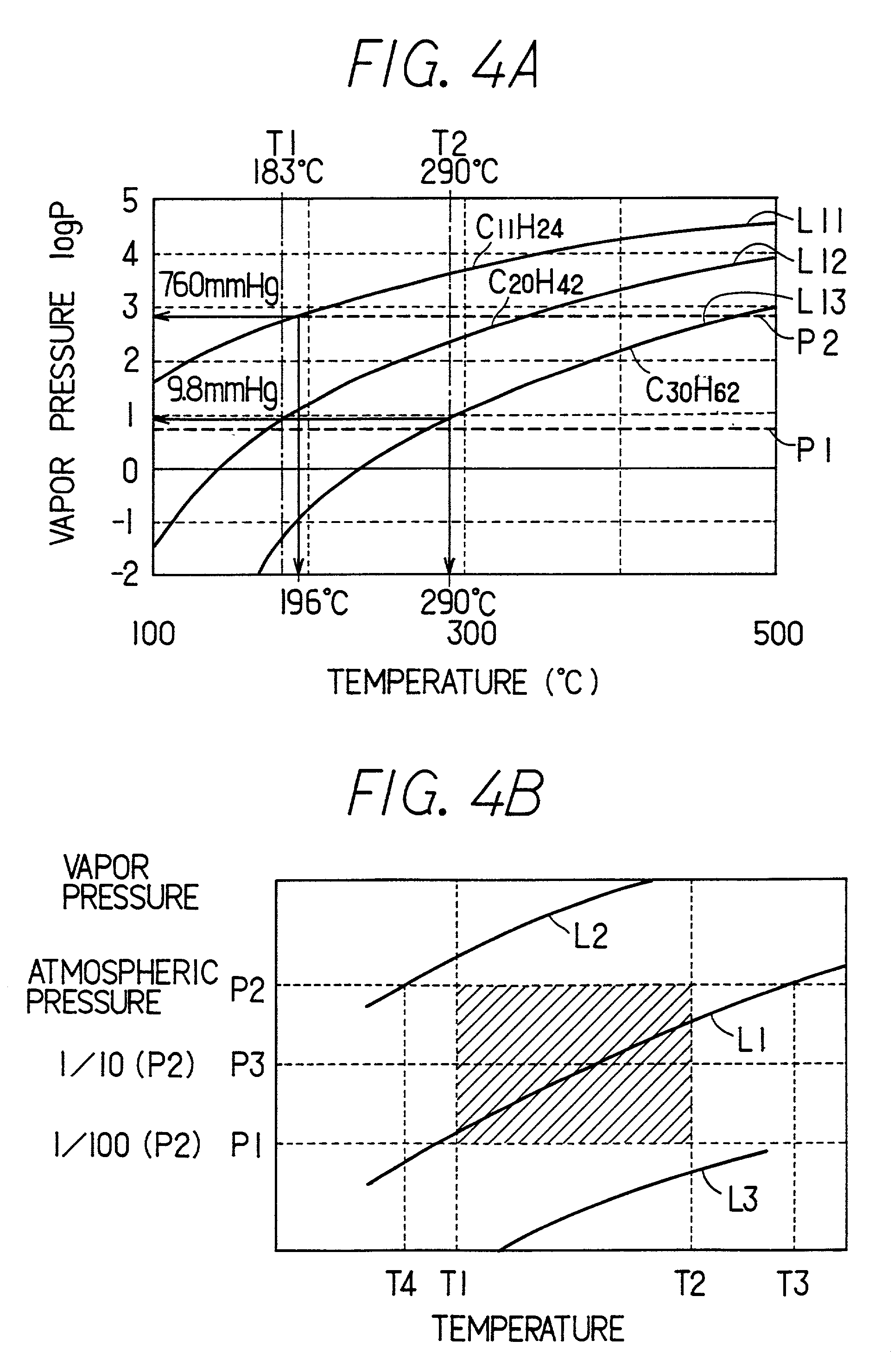Soldered product
a soldering method and soldering technology, applied in the direction of solid-state devices, surface reaction electrolytic coating, printed circuit assembling, etc., can solve the problems of insufficient strength of soldering, difficulty in cleaning operation, and increasing restrictions on the use of cleaning agents
- Summary
- Abstract
- Description
- Claims
- Application Information
AI Technical Summary
Benefits of technology
Problems solved by technology
Method used
Image
Examples
first embodiment
[0025] A description shall be given below of this invention with reference to several embodiments thereof.
[0026] FIGS. 1A to 1C are typical explanatory drawings showing the cases in sequential order in which a copper terminal (the first connection surface) 1 which is formed on a rigid substrate 6 made of glass or glass epoxy and a copper terminal (the second connection surface) 2 which is provided on a flexible substrate (a connected member) 5 made of plastic film are connected by means of soldering. FIG. 2 is a schematic sectional view showing a disposition of the copper terminals 1 and 2.
[0027] In FIG. 1A, solder (main connecting material) 3 has been applied beforehand on the surfaces of each copper terminal 1 and 2, and the surface of the solder 3 is covered with an oxide film 7 before being connected. FIG. 1A shows the copper terminals 1 and 2 in that condition placed one on top of the other so as to be connected. Before placing the terminals one upon the other, an auxiliary con...
second embodiment
[0057] FIG. 5 is a schematic diagram of a case in which this invention is applied to an outlet terminal 51 on a plane display panel of an EL display or a liquid crystal display. A description shall be given on an EL display 50. The EL display 50 is a display illuminated when voltage is applied to a luminous layer formed on a glass substrate 52. The voltage is applied by electrodes disposed in a matrix configuration. The EL display 50 has terminals, that is, the outlet terminals 51, for applying voltage from outside to electrodes disposed in a matrix configuration, which are formed around the periphery of the glass substrate 52 in a numerous microscopic array. This outlet terminal 51 is electrically connected to a control substrate 54, an external circuit, through a flexible substrate (FPC) 53.
[0058] As in the case of the first embodiment, soldering was performed to the outlet terminal 51 by using n-tetradecane. The result of the soldering is the same as shown in the sectional struct...
third embodiment
[0062] FIG. 6 is a typical sectional view showing the connection structure between a circuit substrate 13 and a QFP (Quad Flat Package) type flat package 12 having an integrated circuit inside the package made up of resin material, with leads 17 coming from the four sides thereof.
[0063] On the circuit substrate 13 are provided connecting terminals 14 at a pitch of 0.6 mm. The connecting terminals 14 are plated with eutectic solder of a composition of Sn 60 wt %- Pb 40 wt %. They are further coated with flux as an auxiliary connecting material, which is composed of abietic acid 10 wt %, adipic acid 0.05 wt %, n-tetradecane 10 wt % and the rest of organic solvent (not shown in the figure). The lead 17 of the flat package 12 is provided at a pitch of 0.6 mm. After mounting the flat package 12 on the circuit substrate 13 so that the lead 17 is located on the connecting terminal 14, the lead 17 is heated by means of a heater bar up to 220 to 290.degree. C., the solder 3 is re-flowed and ...
PUM
| Property | Measurement | Unit |
|---|---|---|
| thickness | aaaaa | aaaaa |
| melting point | aaaaa | aaaaa |
| temperature | aaaaa | aaaaa |
Abstract
Description
Claims
Application Information
 Login to View More
Login to View More - R&D
- Intellectual Property
- Life Sciences
- Materials
- Tech Scout
- Unparalleled Data Quality
- Higher Quality Content
- 60% Fewer Hallucinations
Browse by: Latest US Patents, China's latest patents, Technical Efficacy Thesaurus, Application Domain, Technology Topic, Popular Technical Reports.
© 2025 PatSnap. All rights reserved.Legal|Privacy policy|Modern Slavery Act Transparency Statement|Sitemap|About US| Contact US: help@patsnap.com



